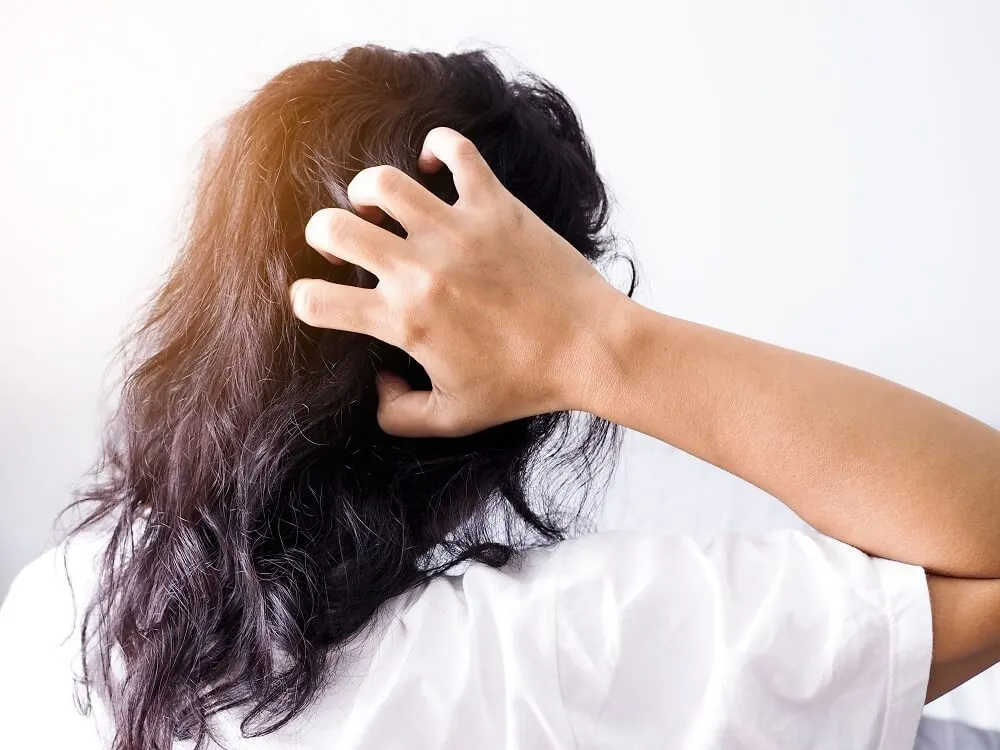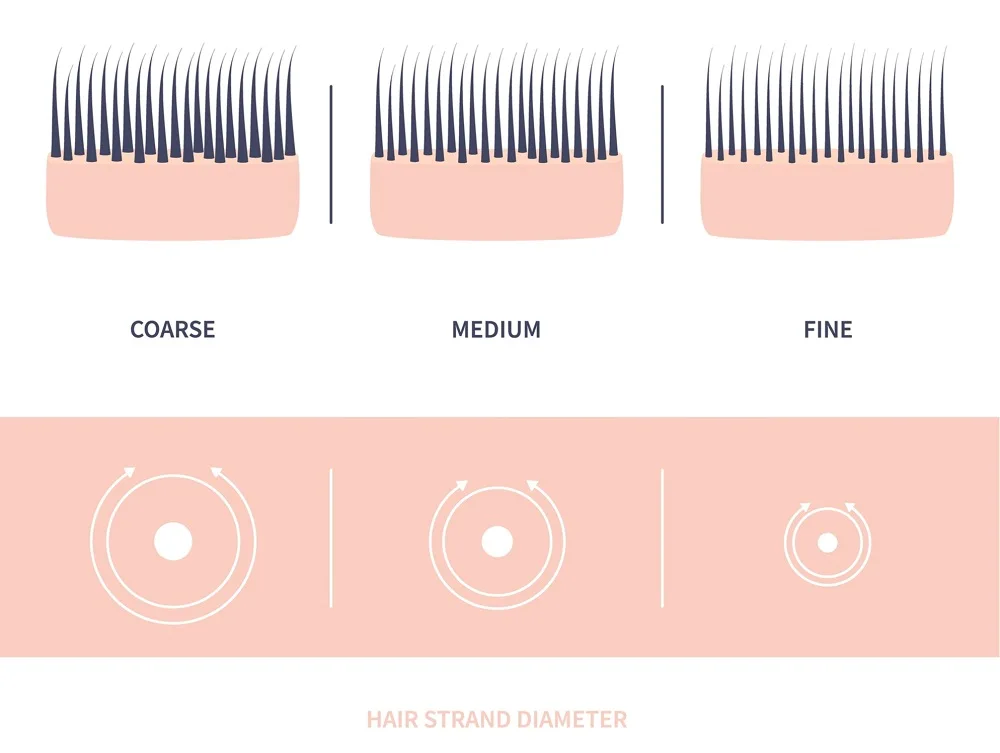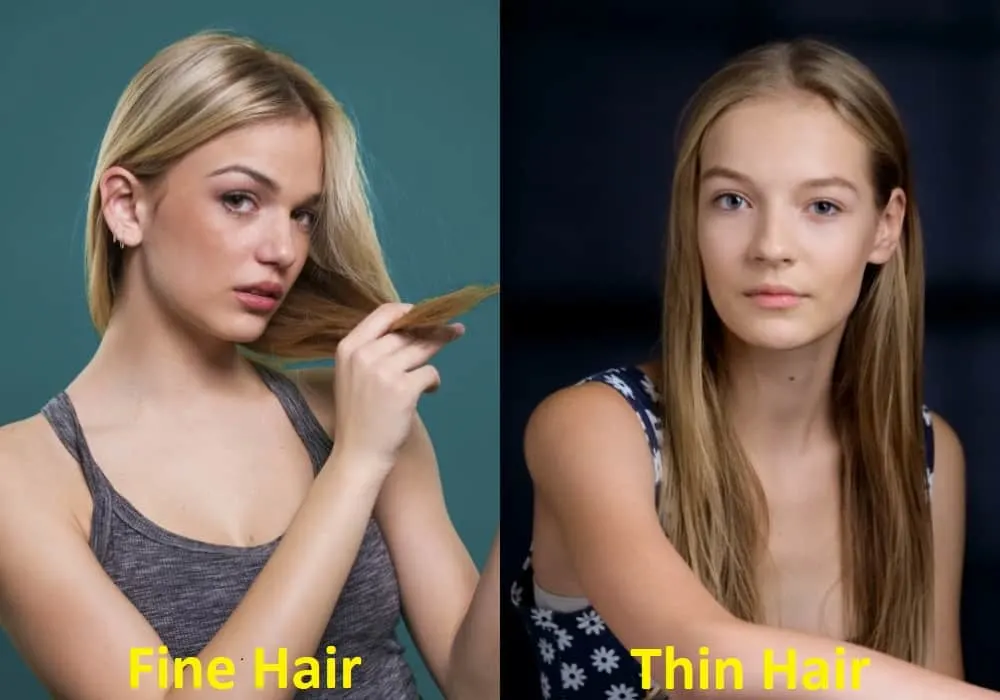We’re not telling you anything you don’t already know, but hair can be really important to folks. It’s a way of distinguishing yourself, showcasing your style, and exploring how to best feel good in your skin.
But in order to keep it looking healthy and beautiful, you need to know how to take care of it - and that in turn requires knowing your hair type. This is especially essential for those with fine hair, as it has completely different concerns and requires a different care routine than others.
Unsure if you have fine hair or how to even determine if it’s your hair type? Well, it’s time to find out!
Continue reading below for our brief guide to fine hair. Not only will it help you know if your hair is fine or not, but it will break down just what “fine hair” is in the first place, common concerns to be aware of, and answer some frequently asked questions regarding the topic.

What is Fine Hair?
So, there’s a bit of a misconception in the haircare world, and we want to clear it up immediately. While the terms are frequently used interchangeably, fine hair and thin hair are not one and the same.
You see, thin hair is hair that’s lacking in density. This type of hair usually contains fewer follicles than what might be seen as average, and there’s the additional spacing between the ones that are present, making hair look more sparse and, well, thin. But when we’re talking about “fine” hair, what we’re referring to has more to do with diameter and texture than density.
Essentially, fine hair is that which is comprised of smaller, more compact hair strands than you’d find in individuals with coarser hair. Because of this, fine hair often has a very soft, smooth, and supple texture. It also tends to be on the thicker side, as smaller hair strands allow more room for follicles than other hair types.
Having a more fine texture is usually a gorgeous, silky (and honestly pretty enviable!) full head of hair. However, for as great as fine hair is, it’s not without its downsides or unique challenges.
Common Concerns with Fine Hair

Perhaps the more prevalent concern is the fact that fine hair doesn’t stand up to no-wash days as well as other hair types. Because each individual hair is smaller in width and there’s generally more of it overall, it tends to get greasier faster.
Not only this but the issue is further compounded as people with fine hair tend to run their hands through their hair more than others to fix fly-aways, add body, etc., which introduces more of the skin’s natural oils to one’s hair. Dry shampoo and slightly more frequent washing are a definite must here!
And speaking of the body, that’s also a common issue for people with fine hair. Because of the smooth, soft texture and increased opportunity for oils to build up, this kind of hair can often be a little flatter than coarser hair. Doubly true is your hair isn’t super thick; a good volumizing shampoo is a fantastic tool you might want to have on hand.
Just be aware, while products like this or mouse are perfectly suitable for adding body and volume, hair dryers or curling irons are not. Fine hair is more prone to damage, and wet hair is extra vulnerable. Heat tools put you at risk for breakage, so try to minimize their use whenever possible.
Really set on using them for a special night out or a big event? Be sure to lower the temperature and always use a high-quality heat protectant to keep your locks luscious and healthy. You and your fine hair will thank us later.
How to Determine If Your Hair Is Fine
There are various ways to determine if you have fine hair, but we will talk about the most straightforward ways to assess this at home. Follow these steps to determine if you have fine hair.

The first thing you should do when trying to determine if your hair is fine, medium, or coarse is to consider its diameter. Are your strands wide or are they fairly thin? An easy way to tell is by simply taking an individual piece of hair between your fingers and feeling it.
Can you barely feel anything? That’s a sign that your hair diameter is very small, thus pointing to fine hair. If it’s barely visible, that’s another great indicator that your hair falls on the finer side of the spectrum.
Here are the specific measurements that determine which type of hair you have:
- Fine Hair: Less than 60 microns (16 or more hairs per millimeter)
- Medium Hair: 60-80 microns (12 to 16 hairs per millimeter)
- Coarse or Wide Hair: 80 microns or greater (fewer than 12 hairs per millimeter)
This test of circumference and diameter is the primary means of figuring out whether your mane is fine or not, but there are other tells, too. For example, it helps to give some thought to how your hair reacts to styling, washing, daily wear, and other things of that nature.
Hair that tends to quickly get oily, tangled, flat, or unruly after a couple of days or very dry and frizzy after washing is probably fine!
Fine Hair vs. Thin Hair

Before you begin worrying that fine and thin hair are the same, please know that these terms often refer to different aspects of your hair.
While fine, medium (what most people have), and coarse refer to each strand’s size and texture, thin and thick most often refer to the amount of hair you have on your head as a whole.
It can sometimes be confusing since people often use ‘thick’ as a way to describe medium hair texture as well.
The phrase ‘fine hair’ refers to each strand’s dimensions and texture (or lack thereof). Fine hair is smaller in dimensions and doesn’t seem to have a texture to it.
It is possible to have both fine hair and thick hair. The thinness or thickness of hair is determined by how many strands are on your head and how far apart they are.
Thin hair is almost always straight instead of curly or wavy since the strands are weaker, making them unable to hold curls or waves.
Are Bleaching and Coloring a Bad Idea for Those With Fine Hair?
At its core, bleaching and color aren’t a great idea for anyone, regardless of hair type. Fine hair is even more vulnerable to its negative effects, becoming more brittle, “straw-like”, and weak to breakage than other hair types. That doesn’t mean you have to avoid it altogether, however.
Playing with color is fun and free, and we support you in exploring your heart’s (or hair’s) content. We merely urge you to be careful when doing so. Go to a professional or do a lot of research on the topic.
Don’t overbleach. Opt for semi-permanent dyes that actively condition your hair over ammonia-based permanents that harm your hair. Use bond builders when bleaching and avoid 40-volume developer whenever possible. In short, be smart and keep your hair’s limits firmly in mind when coloring.
FAQs
While our hair is impacted by so many different factors - from the temperature and humidity to the vitamins in our diet - this is one area where it exclusively relies on heredity. Fine hair is just something you’re born with, resulting from your unique genetic makeup. There’s nothing you can do to truly alter it, although various products and styling methods can make the best of what you were given!
Absolutely! Using volumizing shampoos and conditioners, choosing layered haircuts, trying out products like hair powders, and strategically creating lift at the roots with cool air all help give the appearance of more body and bounce. Rollers and specialized treatments from a professional can be very useful, too.
For starters, do what you can to protect your hair from thermal damage. Beyond that, though, using gentler products, washing a little more often, eating a balanced diet, and being more delicate with your strands are winning strategies if you want your fine hair to look and feel its best.
Related Topics:
